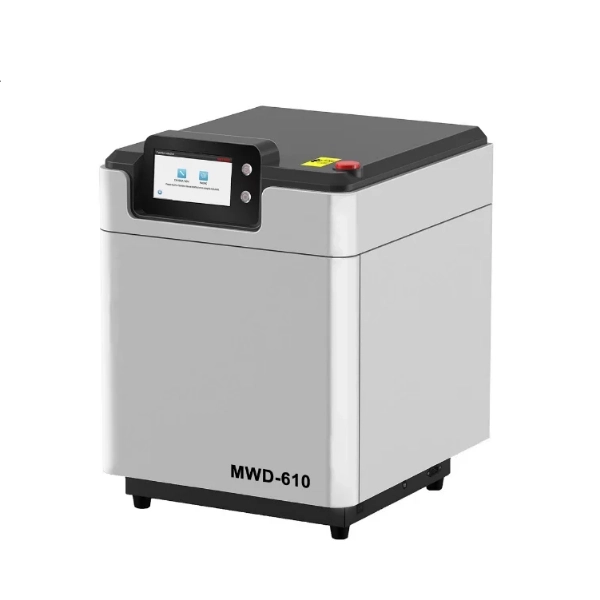
In the realm of food safety, the quality and safety of edible oils, particularly soybean oil, have garnered significant attention from both regulatory bodies and consumers. Soybean oil, a staple in many households, is known for its health benefits, such as its rich content of unsaturated fatty acids, which are beneficial for heart health by reducing levels of low-density lipoprotein (LDL) cholesterol and lowering the risk of cardiovascular diseases. Additionally, it is a good source of Vitamin E, which helps protect cells from damage caused by free radicals.
However, with increasing industrial, soil, and water pollution, the potential for heavy metals like lead, cadmium, mercury, and arsenic to infiltrate soybeans during their growth and subsequently into soybean oil during processing poses a serious threat to human health. In this blog post, Metash, a high performance laboratory equipment exporter, will share the application of microwave digestion system in soybean oil heavy metal detection.
Experimental Preparation
To address the challenge of heavy metal detection in soybean oil, an efficient and environmentally friendly digestion method is essential for sample preparation before analysis. The experiment detailed in this article focuses on the application of a microwave digestion system to pretreat soybean oil samples for heavy metal detection. The key elements of the experimental setup include:
- Sample: Soybean oil
- Digestion Reagent: 12 ml of nitric acid (AR grade)
- Instruments: MWD-610 closed-vessel microwave digestion system, analytical balance, and a 10 ml pipette

Operational Procedure
The process of microwave digestion involves several critical steps to ensure complete digestion of the soybean oil sample while minimizing reagent usage and environmental impact. The procedure is as follows:
1. Weighing and Initial Digestion: Accurately weigh 1.0901 g of the soybean oil sample (to a precision of 0.1 mg) and place it in the microwave digestion inner vessel. Add 10 ml of nitric acid and subject the sample to preliminary digestion at 100℃ for 30 minutes. This initial step helps to break down the complex organic structure of the soybean oil, making it more amenable to further digestion.
2. Supplementary Reagent Addition: After the initial digestion, add an additional 2 ml of nitric acid to the sample. This supplementary addition ensures that there is sufficient reagent to facilitate complete digestion of the sample.
3. Sealing and Microwave Digestion: Seal the digestion vessel and mix the contents thoroughly. Load the vessel into the microwave digestion system and follow the specified digestion program:
|
Pressure (Bar) |
Temperature (℃) |
Power (W) |
Heating Time (S) |
Holding Time (S) |
|
10 |
120 |
1000 |
300 |
60 |
|
20 |
150 |
1000 |
180 |
60 |
|
35 |
180 |
1000 |
180 |
800 |
This carefully designed digestion program involves a gradual increase in temperature and pressure, ensuring that the soybean oil sample is subjected to optimal conditions for complete digestion. The use of a closed-vessel system minimizes the risk of reagent evaporation and sample loss, thereby enhancing the accuracy and reliability of the digestion process.
Digestion Results
The results of the microwave digestion experiment demonstrate the efficacy of this method for pretreating soybean oil samples. The soybean oil sample was completely digested using only nitric acid as the digestion reagent. Notably, the digestion process did not produce any acid fumes, which not only prevents corrosion of laboratory equipment but also ensures that the sample remains intact without any loss. This environmentally friendly approach, which minimizes the use of reagents and eliminates the release of harmful gases, is a significant advantage over traditional digestion methods. The complete digestion of the sample ensures that heavy metals, if present, are fully released into the solution, making them detectable by subsequent analytical techniques such as atomic absorption spectroscopy (AAS) or inductively coupled plasma mass spectrometry (ICP-MS).
Conclusion
The application of the microwave digestion system in the pretreatment of soybean oil for heavy metal detection offers several key benefits. It provides a simple, efficient, and environmentally friendly alternative to conventional digestion methods. The use of a closed-vessel system, combined with a carefully controlled digestion program, ensures complete digestion of the sample while minimizing reagent usage and eliminating the release of harmful gases. This method not only enhances the accuracy and reliability of heavy metal detection but also aligns with the growing need for sustainable and eco-friendly laboratory practices. As food safety standards continue to evolve, the adoption of such advanced and efficient sample preparation techniques will play a crucial role in ensuring the safety and quality of soybean oil and other edible oils, ultimately safeguarding public health.
www.metashcorp.com
Metash




+ There are no comments
Add yours